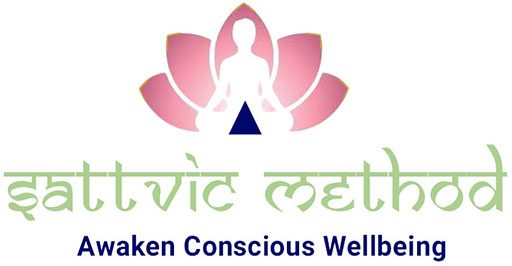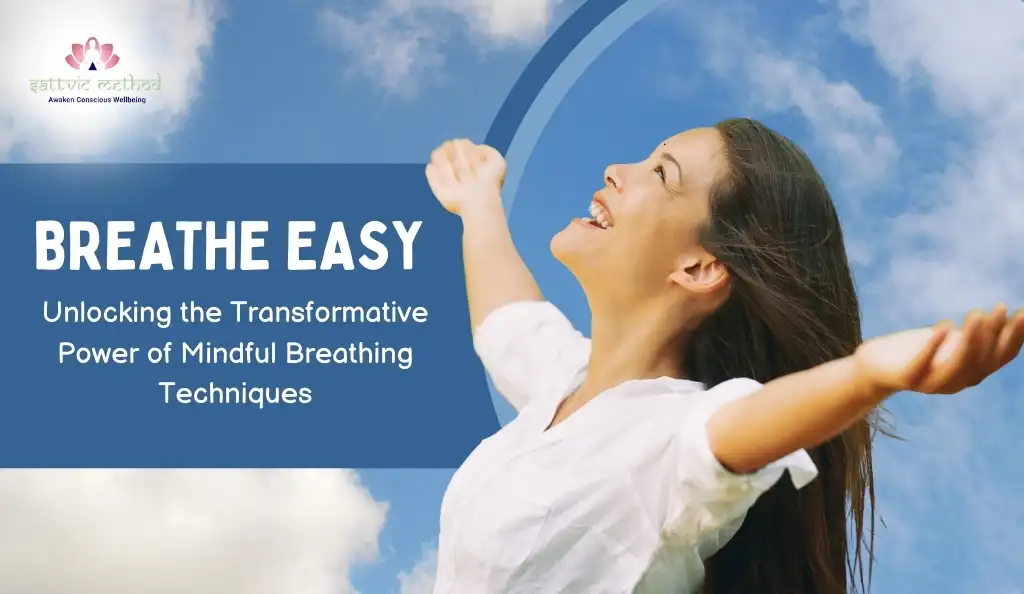Breathe Easy: Unlocking the Transformative Power of Mindful Breathing Techniques
In our fast-paced world, finding moments of calm can feel like an elusive dream. Yet, amid the chaos, there’s a simple practice that holds the power to transform your life mindful breathing. Imagine a technique so profound that it can reduce stress, boost your mood, and enhance focus, all while nourishing your body with each breath. “Breathe Easy: Unlocking the Transformative Power of Mindful Breathing Techniques” takes you on a journey to discover how the act of breathing mindfully can help soothe your mind and invigorate your spirit. Whether you’re looking to manage anxiety, improve your sleep, or simply cultivate a deeper connection with yourself, these techniques provide a pathway to tranquility. Join us as we explore how embracing the art of mindful breathing can become your sanctuary in a noisy world, empowering you to breathe easy and live fully.
The Science Behind Breathing and Well-being
Breathing is an essential function of life, yet it’s often something we take for granted. Each breath we take involves a complex interaction between our respiratory, nervous, and cardiovascular systems. When we breathe, oxygen is drawn into our lungs where it enters the bloodstream and is transported to every cell in our body. Carbon dioxide, a waste product, is then expelled from our bodies through exhalation. This basic exchange is critical for maintaining the pH balance of our blood and for cellular respiration, which fuels our physical and mental activities.
The connection between breathing and our well-being goes beyond these basic physiological processes. The autonomic nervous system, which regulates involuntary body functions, consists of two main branches: the sympathetic nervous system and the parasympathetic nervous system. The sympathetic nervous system is responsible for the “fight or flight” response, while the parasympathetic nervous system promotes the “rest and digest” state. Mindful breathing activates the parasympathetic nervous system, helping to counteract stress responses and promote relaxation.
Scientific research has shown that mindful breathing can significantly impact our mental and emotional health. Studies have demonstrated that controlled breathing can reduce levels of cortisol, the stress hormone, and increase the production of endorphins, the body’s natural mood elevators. This biochemical shift can help mitigate feelings of anxiety and depression, improve cognitive function, and enhance overall emotional stability. By understanding the science behind breathing, we can better appreciate how mindful breathing techniques can be harnessed to improve our well-being.
Benefits of Mindful Breathing Techniques
The benefits of mindful breathing extend far beyond simple relaxation. One of the most profound effects is stress reduction. In our modern world, chronic stress is a common issue that can lead to a host of health problems, including hypertension, heart disease, and weakened immune function. Mindful breathing techniques help to lower stress levels by activating the parasympathetic nervous system, which slows the heart rate and lowers blood pressure, creating a sense of calm and reducing the physiological impact of stress.
Another significant benefit is the enhancement of emotional regulation. By focusing on the breath, individuals can create a buffer between their thoughts and reactions, allowing for a more measured response to stressful situations. This practice can lead to improved emotional resilience and a greater ability to cope with life’s challenges. Additionally, mindful breathing can help to break the cycle of negative thinking patterns, promoting a more positive outlook and greater emotional balance.
Physical well-being is also improved through mindful breathing. Proper breathing techniques can increase lung capacity, improve oxygenation of the blood, and enhance overall respiratory function. This can lead to increased energy levels, better endurance, and improved overall physical health. Furthermore, mindful breathing can aid in pain management by promoting relaxation and reducing the perception of pain. By integrating mindful breathing into daily life, individuals can experience a wide range of benefits that contribute to overall health and well-being.
Different Types of Mindful Breathing Exercises
There are numerous mindful breathing exercises, each with its unique focus and benefits. One of the most popular techniques is diaphragmatic breathing, also known as belly breathing. This exercise involves deep breathing into the diaphragm rather than shallow breathing into the chest. To practice, place one hand on your chest and the other on your abdomen. Inhale deeply through your nose, allowing your abdomen to rise while keeping your chest still. Exhale slowly through your mouth. This technique helps to fully oxygenate the lungs and promotes relaxation.
Another effective technique is box breathing, also known as square breathing. This method is often used by athletes and military personnel to maintain focus and calm under pressure. To practice box breathing, inhale slowly for a count of four, hold the breath for a count of four, exhale for a count of four, and hold the breath again for a count of four. This rhythmic pattern helps to calm the mind and regulate the body’s stress response.
Alternate nostril breathing, or Nadi Shodhana, is a traditional yogic practice that balances the body’s energy channels. To practice, sit comfortably and use your right thumb to close your right nostril. Inhale deeply through your left nostril, then close your left nostril with your right ring finger and release your right nostril. Exhale through your right nostril, then inhale through the right nostril, close it with your thumb, and exhale through the left nostril. This technique can help to balance the nervous system and promote mental clarity.
How to Incorporate Mindful Breathing into Daily Life
Incorporating mindful breathing into daily life doesn’t require significant time or effort, making it an accessible practice for everyone. One of the easiest ways to begin is by setting aside a few minutes each day for dedicated practice. Find a quiet space where you can sit comfortably without distractions. Start with just five minutes of mindful breathing, gradually increasing the duration as you become more comfortable with the practice.
Another effective strategy is to integrate mindful breathing into your existing routines. For instance, you can practice mindful breathing while commuting, during breaks at work, or before bedtime. By associating mindful breathing with specific activities, you create a habit that becomes a natural part of your daily life. Additionally, using reminders such as phone alarms or sticky notes can help prompt you to take mindful breathing breaks throughout the day.
Mindful breathing can also be incorporated into more dynamic activities. Practices such as yoga, tai chi, and qigong emphasize the synchronization of breath with movement, allowing you to cultivate mindfulness while engaging in physical activity. Even during everyday activities like walking, eating, or doing household chores, you can bring awareness to your breath, transforming mundane tasks into opportunities for mindfulness. By weaving mindful breathing into various aspects of your day, you create a consistent practice that supports your overall well-being.
Mindful Breathing for Stress Relief
Stress is an inevitable part of life, but mindful breathing offers a powerful tool to manage its impact. One effective technique for stress relief is the 4-7-8 breathing method. To practice, inhale quietly through your nose for a count of four, hold your breath for a count of seven, and exhale completely through your mouth for a count of eight. This technique helps to slow the heart rate and promote a state of relaxation, making it particularly useful during moments of acute stress.
Progressive muscle relaxation combined with mindful breathing is another effective approach. This technique involves tensing and relaxing different muscle groups while maintaining a focus on the breath. Begin by taking a deep breath in and tensing a specific muscle group, such as your shoulders. Hold the tension for a few seconds, then exhale slowly while releasing the tension. Move through different muscle groups, from your head to your toes. This practice not only promotes physical relaxation but also enhances body awareness.
Visualization combined with mindful breathing can further enhance stress relief. As you breathe deeply, imagine a peaceful scene, such as a beach or a forest. Visualize each detail vividly and use your breath to immerse yourself in the scene. Inhale the tranquility and exhale any tension or stress. This technique engages the mind and body simultaneously, creating a holistic sense of calm and relaxation. By incorporating these mindful breathing techniques, you can effectively manage stress and foster a greater sense of inner peace.
Mindful Breathing for Enhanced Focus and Clarity
In our distraction-prone world, maintaining focus and mental clarity can be challenging. Mindful breathing offers a solution by enhancing cognitive function and improving concentration. One technique to boost focus is the counting breath method. Sit comfortably and close your eyes. Begin by inhaling deeply and counting “one” in your mind, then exhale and count “two.” Continue this pattern up to ten, then start over. If your mind wanders, gently bring your focus back to the count. This practice helps to anchor your attention and improve mental discipline.
The lion’s breath, or Simhasana, is another technique that can invigorate the mind and enhance clarity. To practice, sit comfortably and take a deep breath in through your nose. As you exhale, open your mouth wide, stick out your tongue, and make a “ha” sound. This exercise releases tension in the face and jaw, stimulates the throat, and increases overall alertness. The act of roaring like a lion can also provide a playful and energizing release, helping to clear mental fog.
Mindful walking combined with focused breathing is an excellent way to enhance clarity and concentration. As you walk, synchronize your breath with your steps. For example, inhale for four steps, hold for two steps, and exhale for six steps. Focus your attention on the sensation of your feet touching the ground and the rhythm of your breath. This practice integrates movement with mindfulness, promoting a heightened sense of presence and mental sharpness. By incorporating these techniques, you can enhance your focus and achieve greater mental clarity.
Mindful Breathing Practices for Better Sleep
Quality sleep is essential for overall health, yet many people struggle with insomnia or restless nights. Mindful breathing can be a powerful tool to improve sleep quality and promote restful slumber. One effective technique is the body scan meditation combined with deep breathing. Lie down in a comfortable position and close your eyes. Begin by taking slow, deep breaths, and then focus your attention on different parts of your body, starting from your toes and moving up to your head. As you breathe, consciously relax each body part, releasing any tension. This practice helps to calm the mind and prepare the body for sleep.
The 4-7-8 breathing technique, mentioned earlier for stress relief, is also highly effective for inducing sleep. By slowing the heart rate and promoting relaxation, this technique can help you fall asleep more quickly and enjoy deeper, more restorative sleep. Practice the 4-7-8 method while lying in bed, repeating the cycle several times until you feel yourself drifting off.
Incorporating mindful breathing into a bedtime routine can further enhance sleep quality. Establish a pre-sleep ritual that includes dimming the lights, turning off electronic devices, and engaging in gentle breathing exercises. For example, practice diaphragmatic breathing or alternate nostril breathing for a few minutes before getting into bed. This routine signals to your body that it’s time to wind down, creating a conducive environment for sleep. By integrating mindful breathing into your nightly routine, you can improve your sleep patterns and wake up feeling refreshed.
Common Mistakes to Avoid in Mindful Breathing
While mindful breathing is a simple practice, there are common mistakes that can hinder its effectiveness. One common mistake is shallow breathing. Many people tend to take shallow breaths that only fill the upper part of the lungs. This type of breathing can increase feelings of anxiety and reduce the benefits of mindful breathing. To avoid this, focus on deep, diaphragmatic breaths that fully engage the diaphragm and fill the lungs.
Another mistake is forcing the breath. Mindful breathing should be a gentle and natural process. Forcing the breath or trying to control it too rigidly can create tension and counteract the relaxation benefits. Instead, aim for a smooth and even flow of breath, allowing it to naturally deepen over time. If you find yourself straining, take a step back and focus on simply observing your breath without trying to alter it.
Lastly, inconsistency is a common pitfall. The benefits of mindful breathing are best realized through regular practice. Inconsistent practice can lead to frustration and diminished results. To avoid this, commit to a daily practice, even if it’s just for a few minutes. Establishing a routine and integrating mindful breathing into your daily life will help you experience its full transformative power.
Embracing the Power of Your Breath
In a world filled with constant noise and activity, finding moments of peace and clarity can seem like a daunting task. Yet, the simple act of mindful breathing offers a powerful antidote to the chaos. By understanding the science behind breathing, exploring various techniques, and incorporating these practices into daily life, you can unlock a pathway to tranquility and well-being.
Whether you’re seeking stress relief, enhanced focus, better sleep, or simply a deeper connection with yourself, mindful breathing provides a versatile and accessible tool. The benefits extend beyond the physical, touching every aspect of your emotional and mental health. By embracing the power of your breath, you create a sanctuary within yourself, a place of calm and rejuvenation that you can return to anytime.
So take a moment, inhale deeply, and exhale slowly. Let each breath remind you of the immense power you hold within. By integrating mindful breathing into your life, you empower yourself to navigate the world with greater ease, resilience, and joy. Breathe easy, and live fully.




